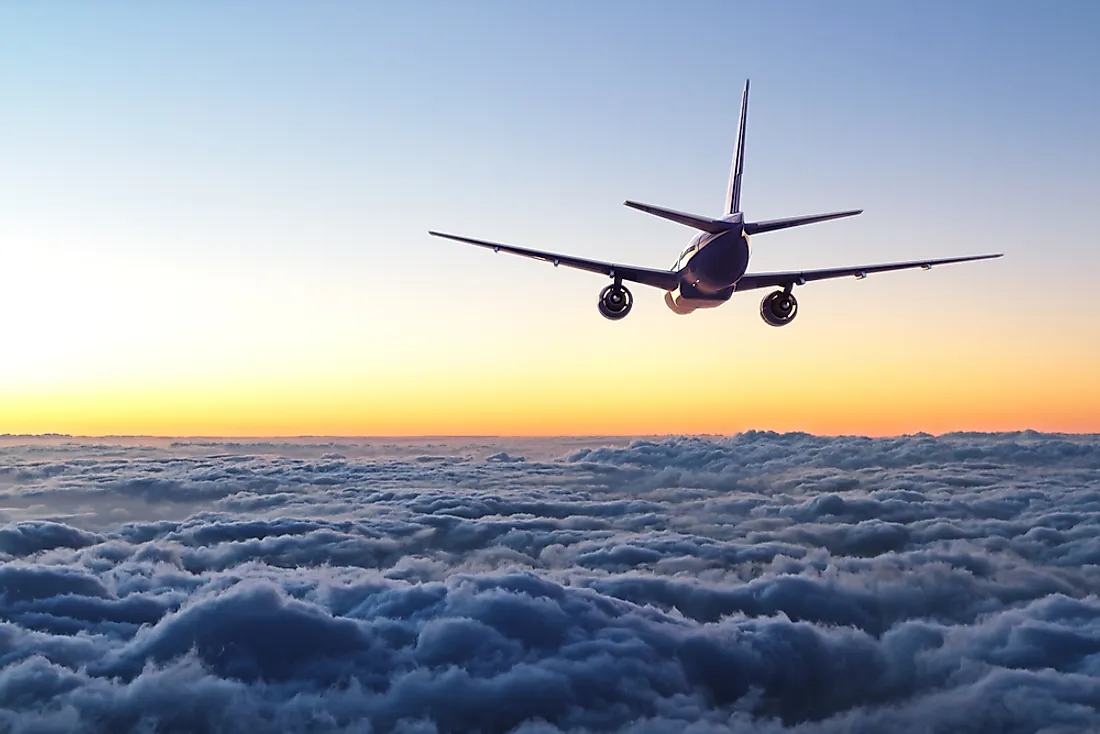Which Layer Of The Atmosphere Do Airplanes Fly In?

Aircrafts typically fly at higher altitudes because air gets thinner as planes ascend higher into the sky, translating in less drag. That means at higher altitudes planes can fly faster and use considerably less fuel. The "preferred region” in the airline industry usually begins at 35,000 feet and ends at 42,000 feet. Operating at very high altitudes means that the amount of oxygen becomes very low for proper combustion in the engines. Traveling at low altitudes, on the other hand, means that the plane is met by higher air resistance. It is essential to note that particular models of aircraft have various optimal altitudes in which they fly. For example, the Concorde was known at heights of between 50,000 and 60,000 feet, and a region where commercial planes regularly do not fly.
Troposphere and Stratosphere
Traveling at high altitudes also means that airplanes can avoid bad weather that is typically found in the lower regions of the atmosphere. It is not uncommon to see bluebird sky from the window seat and later descend to the airport to find different weather conditions. The majority of weather phenomenon on the planet occurs in the troposphere, which is the lowest layer of the atmosphere. It extends up to about 36,000 feet. Helicopters and light aircraft typically fly in the troposphere. Light aircrafts are unable to operate at higher altitudes because they lack pressurized cabins. Therefore, they stay within a range of about 10,000 feet. Flying to higher altitudes would require pilots to wear functional oxygen masks to avoid losing consciousness. Commercial aircraft typically prefer to travel in the stratosphere which has less turbulence and air traffic. Flying in the stratosphere also means that pilots have more time to handle the difficult situation compared to those flying at lower altitudes.
Laws of safe flying altitudes
Around the world, numerous regulations govern low safe altitudes in which aircraft can travel. The laws mainly apply to light aircraft as opposed to airliners. Generally, it is considered unlawful to fly below 1,000 feet in an area with buildings and 500 feet above any vehicle, person, or structure. Such laws ensure the safety of aircraft, people, and property on the ground. The regulations are also put in place due to environmental concerns. Pilots have to ensure that their aircraft is high enough to allow them to clear a congested area when the airplane experiences engine failure. The regulations, however, do not affect take-offs and landings as governed by flight paths. Pilots are also advised against flying too high as engines may struggle due to low oxygen levels at extremely high altitudes.







